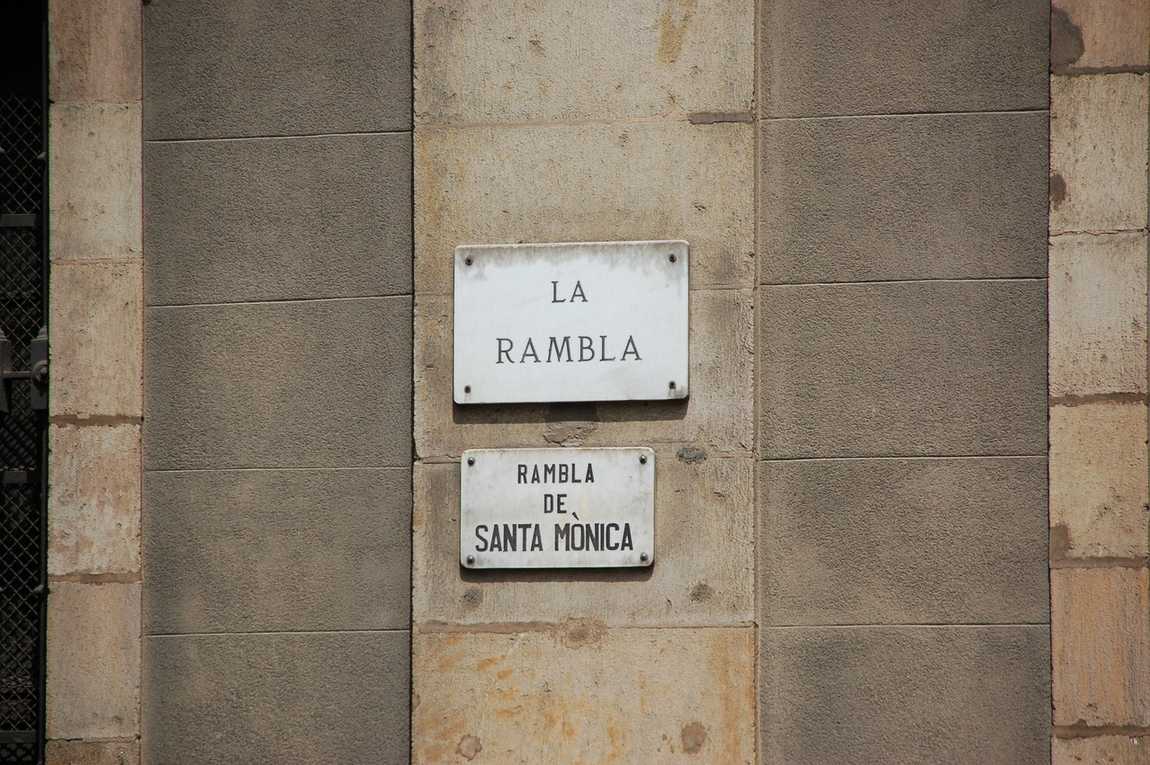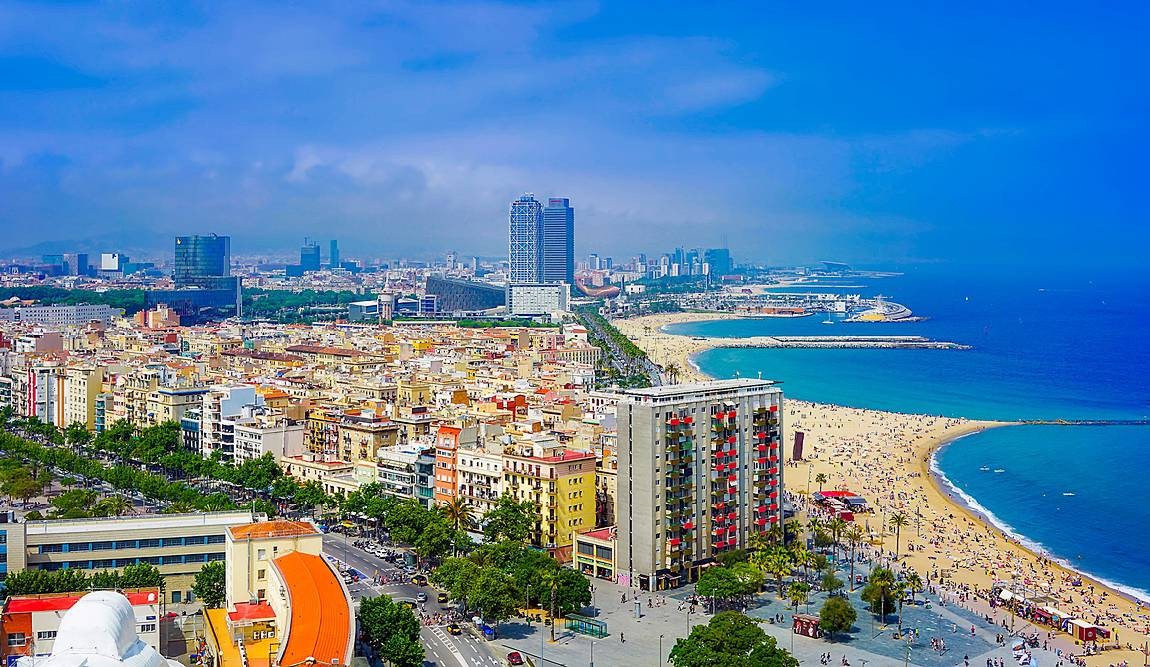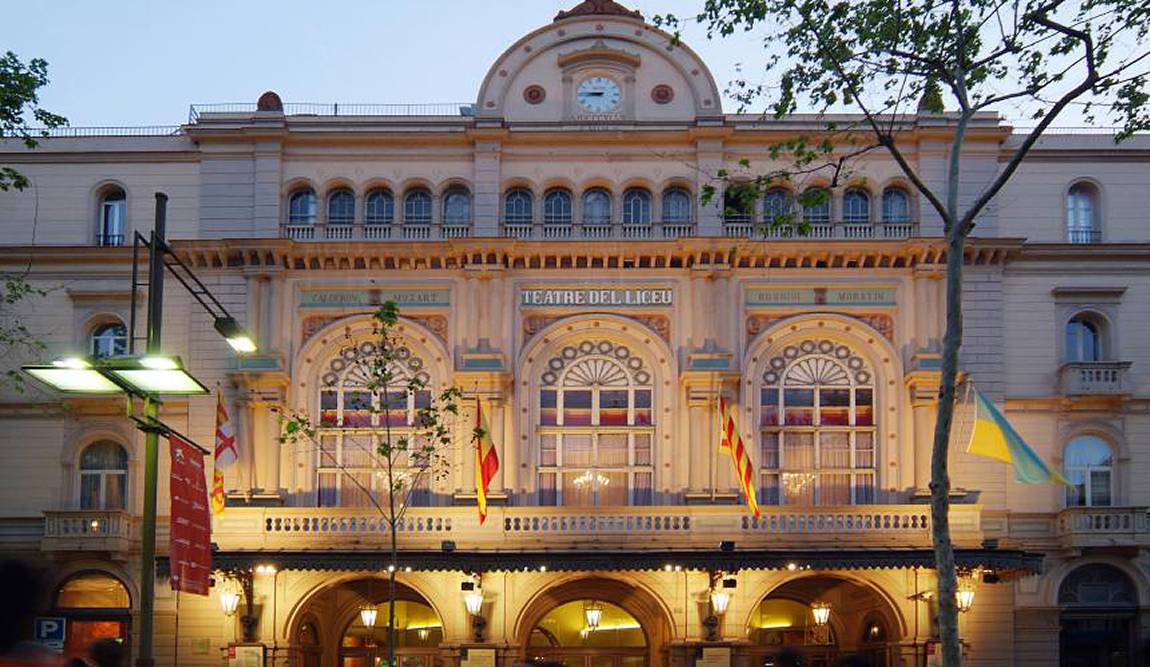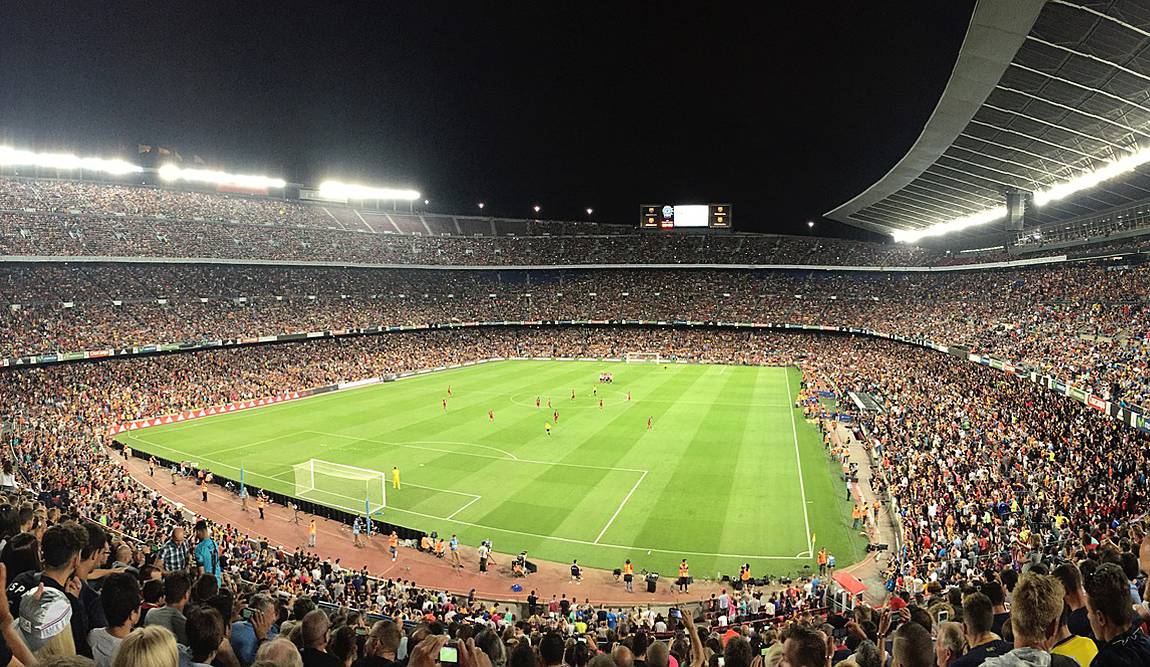Barcelona is one of the most unusual cities in the world, combining architectural styles from different eras, a phantasmagoria of flavours and entertainment for all tastes. The city is often called an "open-air museum", where every exhibit is an interesting fact about Barcelona.
The great Antoni Gaudi dreamed and created here, Salvador Dali lived in his dreams and left a vivid trace, and, of course, the most colourful people in all of Spain live here. Welcome to Catalonia, where the air is like wine and welcoming smiles are sweeter than honey.
Fact 1. The most famous street in Spain
Las Ramblas is the most famous street not only in Barcelona but also in Spain. It is the heart and soul of the city, with life in full swing day and night. But it also has its peculiarity. In fact, the Ramblas is not just one street but five streets with different looks and names that pass one into another.
The very first street, which starts from Plaza Catalunya, is called Rambla de Canaletes. It is called so because of the fountain installed at the very beginning of the street. The second street is named Rambla de Estudios (Rambla dels Estudis) in honour of the university that used to be located here. The third section of the Rambla is called the Rambla St Joseph (Rambla de Sant Josep) but is more commonly referred to as the "Flower Rambla" because of the many flower stalls located in this part of the street. The fourth section is called the Rambla dels Caputxins, but nowadays, it is more commonly called the "theatre Rambla". The Rambla de Santa Monica is the last section of the boulevard and leads to the Columbus statue and the old harbour promenade.

Fact 2. The Fountain of Prediction
The Canaletes Fountain, located in upper part of La Rambla near Plaza Cataluña is very popular with fans of local football teams. It is their traditional meeting place. It's not hard to find a plaque with a reassuring saying: "Whoever drinks from this fountain will fall in love with Barcelona and come back here again". Believe us, it works, as it's impossible not to fall in love with this city! And you can take a bottle of water with you on the road.
Fact 3. Be careful!
Spanish drivers are often mentioned among the worst drivers in Europe (after Italian drivers). Disappointing statistics confirm this because due to the carelessness of local drivers, accidents involving cars and people occur several times a minute, increasing even more at weekends! A majority of Barcelonans prefer to walk than to drive the car. It is therefore not surprising that Barcelona has areas set aside exclusively for pedestrians, totalling 130 hectares, the equivalent of about 260 football pitches.
Fact 4. Columbus and Barcelona
Very close to the port, at the end of the central Las Ramblas boulevard, any tourist can take a good photo of the monument to Christopher Columbus. The monument is hard to go unnoticed, as its height is 60 metres, and the most interesting thing is that the length of the index finger is a whole metre!
In addition, the Columbus Monument in Barcelona is so impressive that a lift inside the monument takes visitors up to the observation deck, which offers a dizzying view of Barcelona.
There are still legends about where Christopher's finger is pointing. There are several versions, one of which points towards the New World, which the famous navigator discovered. Another version, no less plausible: the finger points to the East, towards his homeland — the city of Genoa.
Fact 5. Beaches in Barcelona

Amazingly, the first official beach in the city appeared only in 1992, after the Olympic Games. Before its construction, the area was occupied by industrial facilities, slums neighborhoods and ports. The process of creating the beach began in 1990. The factories were moved, slums were demolished, and the new neighborhood of “Vila Olímpica” was built. Nowdays the number of beaches has not only increased but also pleases holidaymakers with immaculate cleanliness and livability. For example, every year, the sand on all beaches is sifted to a depth of 50 cm, and this can not but please tourists who prefer quality beach holidays in Barcelona.
Fact 6. Freddie and his "Barcelona"
Do you remember the single "Barcelona", released by Queen vocalist Freddie Mercury and operatic soprano Montserrat Caballé? This hit song became the anthem of the 1992 Olympics. Catalans so liked it that many consider it even the anthem of Barcelona. Notably, the song was written by Freddie himself and was included in an album called "Barcelona" in 1988.
Fact 7. St Georges Day and its tradition
On April 23, Barcelona and the whole of Catalonia celebrate one of its most interesting and original holidays — St George's Day, or Diada Sant Jordi. The legend of St George is one of the most widespread in the history of modern civilisation. The legend of a Roman warrior who converted to Christianity and was severely punished by the emperor somehow overlapped with the ancient pagan myth about the victor of the evil dragon, and the resulting superhero on horseback became the symbol and patron saint of a good couple of dozen countries and cities: England, Portugal, Venice, Geneva, Naples, Istanbul, Beirut, as well as Georgia and Moscow. What do roses and books have to do with all this, with which Catalonia is flooded on April 23, the day of St George's death?
Everything is evident with the rose — these flowers grew from the lake of blood at the place of the dragon's death, and one of them was presented by the knight to the princess he saved. But with books, the explanation is also interesting. In 1929, during the Barcelona World Fair, it was decided to declare April 23 as Book Day in honour of Miguel Cervantes and William Shakespeare, who died that day.
So April 23 in Barcelona is several holidays in one. Apart from Book Day and St George's Day, April 23 is also the local Valentine's Day and, simultaneously, a kind of Independence Day, along with September 11.
Fact 8. Gran Teatre del Liceu and its misfortunes

The Gran Teatre del Liceu is one of Europe’s most renowned opera houses with a very turbulent past (two fires and a terrorist attack). After a fire in 1994 destroyed Europe's most luxurious opera house, the Liceu was completely rebuilt. Remarkably, the opera house was rebuilt again with donations from caring locals and thanks to Domingo, Caballé and Carreras charity concerts. In any case, nowadays, the building has been rebuilt and restored and presents itself to visitors to the city in its original appearance.
Fact 9. The Great Picasso
In 1953, Pablo Picasso decided to present his paintings to a museum in Málaga, where he was born. But the artist was refused by the museum. Eventually, the great artist's valuable exhibits moved to Barcelona when Jaime Sabartes, a close friend of the artist, proposed to the municipality of Barcelona to create a museum dedicated exclusively to Picasso. Initially, the museum exhibited only 574 paintings by the artist from Sabartes' collection. In gratitude, Picasso personally donated around 900 more paintings to this museum.
Fact 10. A little fly in the ointment
Despite the many pluses, interesting and fun facts about Barcelona also contain a negative side. For example, Barcelona is among the 20 cities in Europe with the worst environmental indicators. Almost half of all emissions are made by cars, so the city authorities have introduced a limit on the use of vehicles. Nowadays, you can increasingly see eco-mobiles on the carriageway and cyclists, for whom the city has more than 400 bicycle stands.
Fact 11. Pickpocketing
A tourist visiting Barcelona for the first time should not lose wariness, as the city, or its unconscious part of the population, has become a leader in pickpocketing. The most frequent "dangerous" places, glimpsed in police reports, are Plaza Catalunya and Las Ramblas. If you want advice, it is best not to take large sums of money with you; leaving them in the hotel safe is better.
Fact 12. Attention, fines!
Public order is difficult to enforce, especially when the influx of tourists is exceptionally high. But this has not prevented the authorities from introducing a system of fines for drinking alcohol in public places (on the street) of up to 600 euros, and for unauthorised alcohol sales — 500 euros. Also, if you like to decorate your walls with graffiti, refrain or prepare to pay between 300 and 500 euros ( and even sometimes 600 euros if the building is state property) to the local treasury. Also, fines for smoking on Barcelona's beaches have recently emerged.
Fact 13. Barça — the pride of Spain!

The world-famous football club Barcelona, lovingly called Barça by the Spanish, is much loved by the locals, and there is plenty of evidence of this, from the club's victories in European tournaments to four consecutive Champions League wins! And how not to tell about the club's private stadium? Its capacity is, imagine, 100,000 people!
Oh, Barcelona, oh, Spain! And we still need to cover bullfighting, bull-running in the streets and Spain's annual "Tomatina" street battles. Let these facts be the topics for our future articles, but in the meantime, find out where the largest aquarium in Barcelona is, the size of which will impress you.






